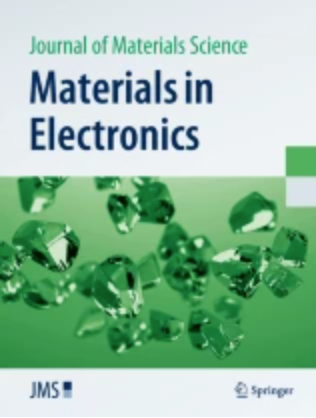Structural, optical and electrical properties of Al-doped TiO2 and NiO thin films synthesized via chemical bath deposition
IF 2.8
4区 工程技术
Q2 ENGINEERING, ELECTRICAL & ELECTRONIC
Journal of Materials Science: Materials in Electronics
Pub Date : 2025-03-24
DOI:10.1007/s10854-025-14604-6
引用次数: 0
Abstract
The pure and aluminium (Al) doped titanium oxide (TiO2) and nickel oxide (NiO) thin films were prepared by chemical bath deposition. The films were prepared for different aluminium concentrations, i.e., 2%, 4%, 6% and 8%, respectively. The XRD patterns of the Al-doped TiO2 and NiO films showed hexagonal and cubic phases with polycrystalline. The crystallite size of the films was varied with Al doping. The absorbance of the films was improved with aluminium doping for TiO2 and NiO films. The bandgap of the films ranged m 3.1 to 2.8 eV for TiO2 and 3.7 eV to 3.3 eV for NiO with aluminium doping. In both films, the electrical resistivity and carrier concentration varied with the aluminium doping concentration.
求助全文
约1分钟内获得全文
求助全文
来源期刊
CiteScore
5.00
自引率
7.10%
发文量
1931
审稿时长
2 months
期刊介绍:
The Journal of Materials Science: Materials in Electronics is an established refereed companion to the Journal of Materials Science. It publishes papers on materials and their applications in modern electronics, covering the ground between fundamental science, such as semiconductor physics, and work concerned specifically with applications. It explores the growth and preparation of new materials, as well as their processing, fabrication, bonding and encapsulation, together with the reliability, failure analysis, quality assurance and characterization related to the whole range of applications in electronics. The Journal presents papers in newly developing fields such as low dimensional structures and devices, optoelectronics including III-V compounds, glasses and linear/non-linear crystal materials and lasers, high Tc superconductors, conducting polymers, thick film materials and new contact technologies, as well as the established electronics device and circuit materials.

 求助内容:
求助内容: 应助结果提醒方式:
应助结果提醒方式:


